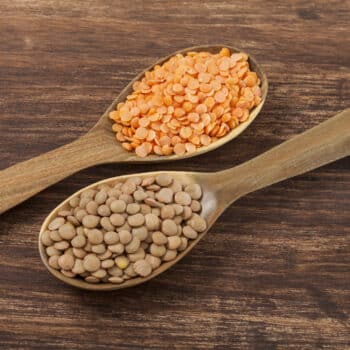What Happens When My Body Has Low Molybdenum?
When our bodies don’t receive enough molybdenum, we see increased fertility problems in males and females. Additionally, esophageal and rectal cancers are at an increased risk when the molybdenum content in soil is low. These higher-risk geographical areas include South Africa and Iran. When molybdenum is low, certain symptoms may occur, including:
- Seizures
- Increase heart rate (tachycardia)
- Headaches
- Disorientation
- Vomiting
In one known case, a patient with Crohn’s disease was given IV nutrition that lacked molybdenum. He suffered headaches, tachycardia, and night blindness. Once his nutrition source was restored with molybdenum, his symptoms resolved with no further related complications.
Fortunately, low molybdenum is a rare occurrence in humans because amounts in food sources are generally adequate. As noted above, only a few geographical locations around the globe are at risk for low molybdenum as a result of low soil content. In these areas, supplements are effective to make up for the deficiency.
What Benefits does Molybdenum Provide?
In addition to molybdenum’s preventative properties toward esophageal and rectal cancers noted above, this nutrient provides multiple benefits for overall health. These positive advantages include:
- Antioxidant properties – there is evidence to show that molybdenum bolsters the body’s antioxidant defense. Because molybdenum is a cofactor for xanthine oxidase, the resulting process produces a higher antioxidant capacity in our blood.
- Improved oral health – molybdenum has been shown to help prevent cavities in our teeth. This nutrient is one of the trace minerals found in tooth enamel, and it works to provide stronger oral health through this protection.
- Arthritis prevention – molybdenum generates anti-arthritic properties through the increased activities of molybdoenzimes. These actions result in lower stiffness and swelling that occur with arthritis.
- Anemia management – because of the molybdoenzyme function when molybdenum is present, we have seen positive evidence for the management of iron deficiency anemia. This activity can reduce the common symptoms of anemia like fatigue, restless legs, and shortness of breath.
With these and other proven benefits, it is easy to comprehend why molybdenum is an essential element for general health.
What Foods are Sources of Molybdenum?
Because molybdenum is generally present in the soil and absorbed into plants and the animals that feed on them, we can gather the necessary supply of this nutrient through our diet. Of course, some foods will contain higher concentrations of molybdenum than others. When seeking molybdenum intake, some of the best food sources include:
- Legumes (especially lentils and black-eyes peas)
- Leafy vegetables
- Organ meats (particularly liver and kidney)
- Dairy products (milk, cheese, and yogurt)
One of the foods that is lower in molybdenum is soy. Studies have shown that soy products contain only 58 percent molybdenum availability. Fortunately, other food sources provide enough of this nutrient to provide adequate levels for our bodies to process.
Is it Possible to Have Too Much Molybdenum?
Just as with other minerals and vitamins, there is no significant advantage gained by taking more than necessary. This is true of molybdenum as well. Additionally, studies have shown that excess molybdenum can cause some side effects that include gout, decreased bone health, and reproductive difficulties. Fortunately, these cases are quite rare and have not had a widespread effect.
Are My Concerns Linked to Molybdenum?
If you are experiencing physical, mental, or other health concerns, of course, we recommend that you seek professional guidance. At Bridgepoint Clinics, our clinical staff has years of experience analyzing patient indications and determining the true root cause of these symptoms. From there, we work with patients to set a course for healing and restoration.
You can benefit from our experience as well. Contact us today to begin the process of healing in your unique situation. We are prepared to review your concerns and develop a blueprint to both alleviate symptoms and rectify the cause of the symptoms. Your health us our ultimate goal, and we look forward to helping you achieve the results you desire in a timely fashion.
Primary sources:
https://www.healthline.com/nutrition/molybdenum
https://www.webmd.com/vitamins/ai/ingredientmono-1249/molybdenum
https://www.bensnaturalhealth.com/blog/benefits-of-molybdenum/
https://www.medicalnewstoday.com/articles/molybdenum-uses
https://selfhacked.com/blog/molybdenum-amazing-benefits/
<<Back to Micronutrient Center


